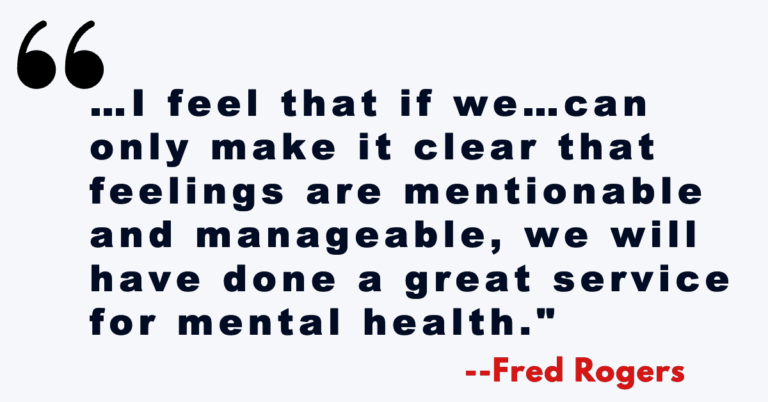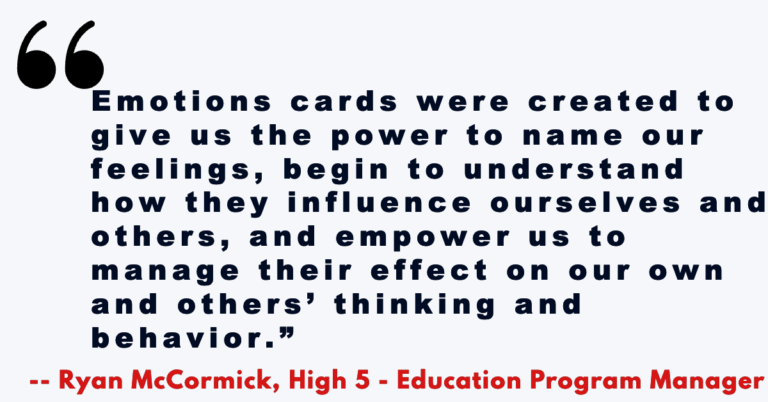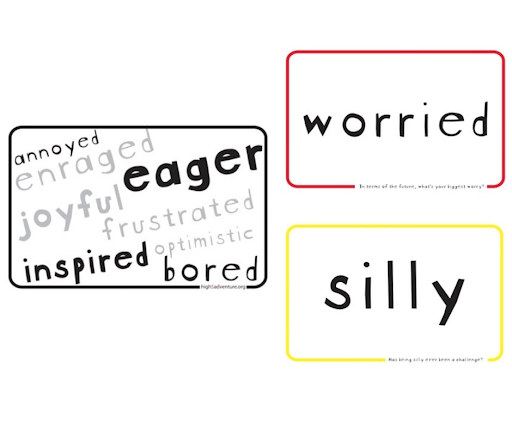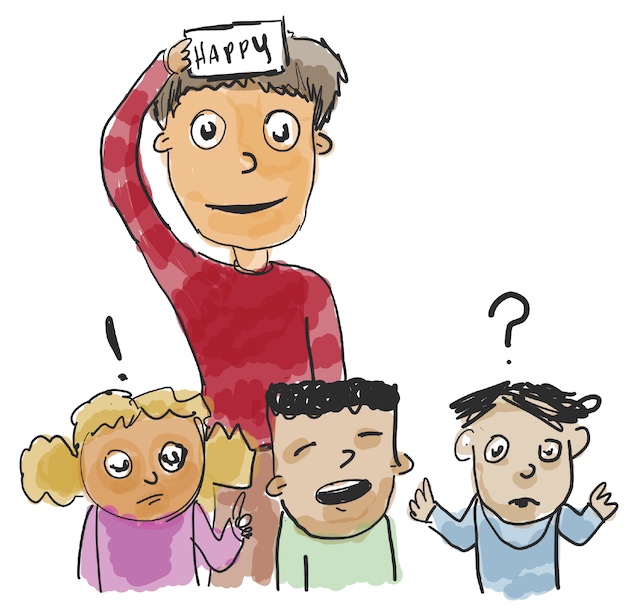Unlocking Emotional Intelligence: An Innovative Resource for Students and Adults
Introducing Emotions by High 5
How are you feeling today? It’s a typical question in the neighborhood of daily conversation at school, at work, at home, etc. Yet our ability to name our feelings and emotions, at any age, can be a challenge, and that challenge has grown in today’s social climate and as we navigate past the pandemic. Our Edge of Leadership® team discovered this challenging phenomenon to be true in their work with students for the past 3 years and set out to develop an experiential activity to support emotional intelligence and personal growth. Here’s how they turned an idea into an innovative resource for students and adults.
The idea of expressing feelings and emotions is not a novel concept, as Fred Rogers, host of the PBS program Mister Rogers’ Neighborhood, illuminated over a half-century ago. Trust Mr. Rogers to speak truth to power. Following is a quote from his 1969 testimony before a Senate committee considering whether to reduce or eliminate support for PBS and its programming.


Defining Emotions and Feelings
Decades before concepts such as social and emotional learning and personal well-being permeated the learning landscape, Mister Rogers encouraged youth and adults to name their feelings and emotions. As long as humans have spoken in more than grunts, the power of naming has been key in our efforts to order and master the world around us. ‘Name a thing and you own it’ has led us to some pretty amazing accomplishments–consider the Oxford English Dictionary, which has several definitions for emotions and feelings, including the following:
Emotions Plural noun: a natural instinctive state of mind deriving from one’s circumstances, mood, or relationships with others.
Feelings Plural noun: an emotional state or reaction.
The difference between emotions and feelings is essentially this: emotions are physiological responses, while feelings are thoughts we apply to those sensations in the body. Emotions can be named, explored and mastered. Fred Rogers showed that to the politicians, who approved the funding for PBS. But Fred’s gone and we need something to help us open our minds to the meaning of emotions and their impact on our own and other’s lives. There is a new and, for experiential educators and facilitators, exciting way to get a handle on our emotions: Emotions by High 5® cards.

These cards are a co-creation of High 5’s Edge of Leadership and Training teams – a true collaboration in every sense of the word. Ryan McCormick designed the cards using bright primary colors. He also designed our well-known Ubuntu cards. Emotions, like Ubuntu, are about connection, understanding, empowerment, with a different end in mind: to be able to name our emotions and manage the results of their expression in the decisions we make and actions we take. While it may be redundant, I think it’s worth repeating:

Exploring our emotions is a challenging idea, especially when that discovery process is public. Most people head toward some safe, protected space when their emotions are being discussed, to avoid being analyzed and ‘therapeutized’ by colleagues and friends. But it’s through sharing that we learn that our emotions are not unique, that they have been experienced by others, perhaps with the same result, and we can begin to discover the ways and means to manage them. But to do that, we need the right conditions and effective tools. The conditions are fairly obvious. We need:
- Honesty in communication
- Openness and a willingness to be vulnerable
- Trust in the people around us to know that we are safe in risking that vulnerability
- A shared vocabulary.
What Makes These Cards Unique
With that supportive environment in place, how do we get to the point of discovery, let alone management of our emotions? Having some idea of the range of activities in which Emotions by High 5 cards are used may help you to better understand the nature of the cards as aids to understanding and management tools. Here are a few group activities, just so you can begin to see what we mean:
- Name That Situation This fun and playful activity reminds us of the complexity of emotions and how we often experience more than one emotion at a time.
- Secret Emotion This activity encourages participants to work together and think more granularly and specifically about emotions and helps them consider what makes each emotion unique.
- Am I Happy or Enraged? This interactive activity challenges participants to try and figure out the emotion on their card without being able to see it by asking their partners yes or no questions.
- Defining Emotions This conversation-based activity helps participants understand the meaning of different emotions so everyone is on the same page to develop a common language and understanding.
- Sorting Emotions This conversation-based activity introduces participants to the Mood Meter, developed by Marc Brackett and Yale’s Center for Emotional Intelligence. The Mood Meter gives us a common language to think about, describe, and categorize emotions.
- Mapping Emotions This reflective activity asks participants to think about the emotions they might experience in a variety of situations. It encourages both self-awareness and social awareness of emotions.


Learn More and Find Out How to Get a Deck of Cards
Emotions are a fundamental part of our human experience, yet understanding and navigating them can sometimes be a challenge. Enter Emotions by High 5, a tool for educators and facilitators designed to enhance emotional literacy, develop essential skills for managing emotions, and facilitate meaningful discussions. The cards cover a wide range of emotions, empowering individuals to identify and understand their feelings and those of others, which promotes self-awareness, effective communication skills, and empathy.
If you’re interested and want to begin the fascinating and powerful adventure of discovering, naming and managing your emotions, visit our Store to learn more about Emotions by High 5. We’ll always be happy, thankful, excited, and elated (just to name a few of our feelings) to connect with you!
Additional References
- 3 Ways to Better Understand Your Emotions (hbr.org)
- Emotions and Decision Making (2014) J. Lerner Harvard University
- In our digital world, are young people losing the ability to read emotions? | UCLA
- https://zscalarts.files.wordpress.com/2014/01/emotions-revealed-by-paul-ekman1.pdf
- Putting Feelings Into Words, (2007) M. D. Lieberman untitled (ucla.edu)
- The impact of emotion on perception, attention, memory, and decision-making | Swiss Medical Weekly (smw.ch)
- Social Media and Youth Mental Health (hhs.gov)
- In our digital world, are young people losing the ability to read emotions? | UCLA
- Why America Has a Youth Mental Health Crisis, and How Schools Can Help | Education Week
HIGH 5 ADVENTURE LEARNING CENTER
130 Austine Drive, Suite 170
Brattleboro, VT 05301
Office: 802-254-8718
Toll Free: 877-356-4445
Fax: 802-251-7203
Privacy Policy
